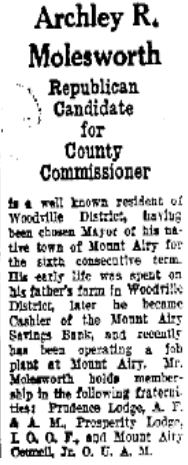A figure of distinction in the city of Troy, New York, German immigrant Dagobert Zeiser immigrated to the Empire State in 1860 and after serving in the Civil War became one of Troy's most prominent businessmen and merchants. In addition to his career as a butcher and beef wholesaler, Zeiser was active in Socialist political circles, eventually becoming the candidate of that party for Mayor of Troy and later for the New York State Senate.
Born in Wittenberg, Germany on December 13, 1841, Dagobert Zeiser was the son of John and Caroline Mueller Zeiser. John Zeiser is remarked by the Troy Daily Times as being a well-to-do grain dealer in Wittenberg, and both of Dagobert's parents are listed as being the product of "very prominent German families". Dagobert Zeiser resided in his native country until the age of 20, whereafter he immigrated to the United States, settling in the city of Troy around 1860.
A few months after his arrival, Zeiser found work as a farm hand and engaged in this line of work for about two years. In late 1862 he signed on for service in the Civil War, joining up with Company H, 169th Regiment of the New York Volunteer Infantry. His 1925 Troy Daily Times obituary notes that he "saw much service" and later suffered a grievous gunshot wound to his jaw at the Battle of Petersburg. Zeiser eventually rebounded from his war wound and was later discharged due to being "physically disabled". After being discharged from service in 1865 Zeiser returned home to Troy and on January 21st of that year married Josephine C. Rhinehart, with whom he would have a total of 15 children! Among this impressive number of offspring were six sons, (Albert, John J., Joseph, Frederick, Rudolph, and Leo) and five daughters (Josephine, Caroline, Mrs. William Grant Hague, Mrs. John Carr, and Mrs. Frederick Crowley). The three remaining Zeiser children's names are unknown at this time.Around the same time as his marriage, Zeiser embarked on a lifelong career as a butcher and meat producer, opening a shop in the Port Schuyler vicinity. He remained in this area until December 1882, when he ventured into wholesale beef production. In that year he and fellow butcher David Gaffey formed the company of Gaffey and Zeiser, "wholesale dealers in western dressed beef and pork." This company received a substantial write-up in the 1886 history of The City of Troy and Its Vicinity and was remarked as becoming "strongly established in public favor, and acquired, by its perseverance and enterprise, the large business in the wide extended territory mentioned." Receiving their product from the Armour Company in Chicago, Gaffey, and Zeiser would command a "great part of the territory of Northern New York, Vermont and Western Massachusetts, for the distribution of large quantities of dressed beef."
Throughout the succeeding years, Zeiser built up a wide reputation as a consummate businessman, winning the "esteem and confidence of all brought into contact with him during the course of trade." While highly identified within the business community of Troy, Zeiser was also prominent in the activities of the Socialist Party, running on that ticket for Mayor of Troy on several occasions. His first attempt at the office came in 1894 when he ran for mayor on the Independent Democratic ticket. As one of eight candidates that year, Zeiser came out on the losing end, being defeated by incumbent Mayor Dennis J. Whelan. An article on that year's contest has been posted below.
From the September 1894 edition of the Syracuse Evening Herald.
Zeiser's 1919 Mayoral candidacy, featured in the Troy Daily Times.
In addition to his 1894 candidacy, Zeiser ran on the Socialist ticket for mayor of Troy on several other occasions, including two contests in 1919 and 1921. In the former year, the Troy Times noted that he garnered around 700 votes, with Zieser himself relating that he "did not spend a single penny in his campaign", and that his vote total was received through integrity and his strength of character.
In November 1922 Zeiser was again a Socialist Party candidate, this time running for a seat in the New York State Senate. In that year's contest, Zeiser squared off against incumbent Republican Frederick Draper and his Democratic opponent John P. Ryan. One should note that Zeiser was over eighty years old when he began his senate campaign, and one can wonder if his age (and not his party affiliations) were a factor when it came time for people to cast their vote. On election day 1922 Zeiser again came up short in the vote count, polling only 1,131 votes to John P. Ryan's victorious tally of 26,432. After losing this contest Zeiser made no more attempts at public office and continued to be a prominent business force in Troy. He was mentioned by the Troy Daily Times as having been engaged as a butcher and meat wholesaler for over forty-three years.
Dagobert Zeiser's last few months were marred by ill health, and he died at his home in Troy on April 8, 1925, at age 83. His wife Josephine had preceded him in death in 1912 and both were buried at the St. Agnes Cemetery in Troy. The portrait of him shown above was featured in his Troy Daily Times obituary, published on April 8, 1925.
A death notice for Zeiser that appeared two days following his death.









































